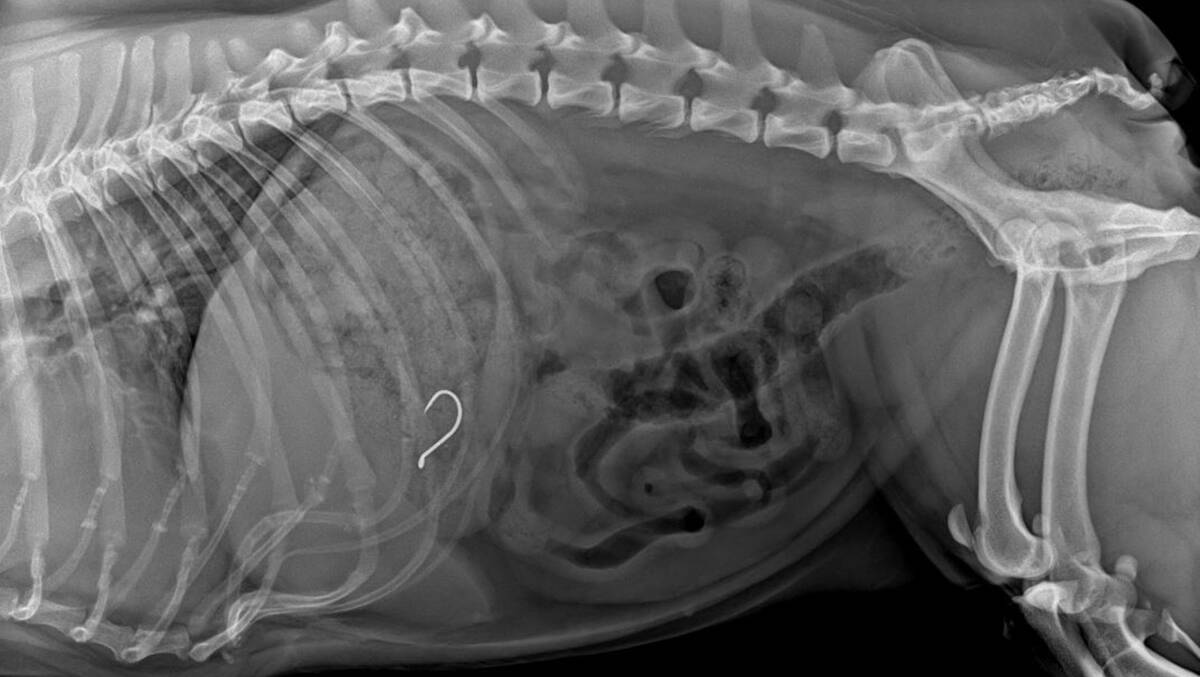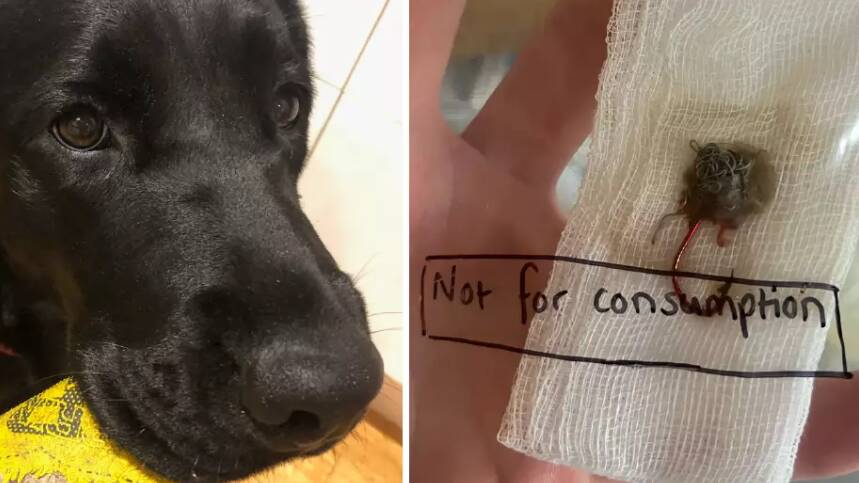YOUR PETS

Recently I met Koko, a sweet young French bulldog who had gotten into strife on her evening walk along the waterfront.
Enjoying some off-lead time, Koko had run ahead of her owner, happily exploring until she found something that smelled distinctly tasty near a person who was fishing.
Koko picked up whatever it was and rapidly swallowed it. When her owner caught up with her, Koko had a long length of fishing line protruding from her mouth.
Fortunately, her owner was aware he should not to pull on the fishing line, knowing that it might be attached to a hook. He brought her to see me immediately.
When you see fishing line, sewing thread, wool, string, ribbon or anything long and thin protruding from an animal, it can be tempting to simply pull on this.
The trouble is that if that is anchored somewhere - via a hook, a loop or a knot - this can cause major internal damage.
Koko's owner was outwardly calm, which meant Koko was calm (if a little bewildered by all of the attention she found herself receiving).
Because it was difficult to examine Koko's mouth properly due to the size of her tongue, I sedated her.
There was no sign of a fishing hook in her mouth, but I could see the line disappearing into her oesphagus or, as some would call it, her food pipe.
So, we took x-rays and there it was - a barbed fishing hook sitting in her stomach.
Often, when a dog ingests something that they should not - such as a non-food item - we induce vomiting to remove the offending object. Unless, of course, that object is sharp.
In such cases, inducing vomiting is dangerous as the sharp object can lacerate internal structures, including the oesophagus, when it comes up.
Koko was referred to an emergency veterinary centre for anaesthesia and endoscopy. This is where a camera on a flexible tube is threaded down into the oesophagus and stomach. It takes quite a bit of skill to remove foreign bodies from the stomachs of dogs - particularly those with full stomachs.
Thankfully, Koko made a full recovery. Sadly, however, Koko's plight is not uncommon. Veterinarians situated close to the coast or inland rivers regularly remove fishing hooks from the paws, mouths and gastrointestinal tracts of dogs unlucky enough to engage with them.
Hooks are designed to catch, and they are often barbed so that animals cannot shake them off or remove them without assistance.
Of course, owners who walk their dogs in areas where people fish need to be aware of the risk of improperly disposed of fishing tackle.

But it is vitally important that those who do fish do not leave fishing gear (including bait and tackle) unattended. Hooks, lures, bait and fishing line present a hazard not just to dogs, but to birds, sea creatures and even humans.
Thus even people fishing on lead-only or dog free beaches should take care. They must be disposed of responsibly, and never just thrown in the water. Also avoid releasing fish with hooks in them and use barbless hooks for catch and release.
- Koko's name and x-ray are used with permission of her owner, to alert others pet lovers.
- Dr Anne Quain is a lecturer at the Sydney School of Veterinary Science and a practising veterinarian.

